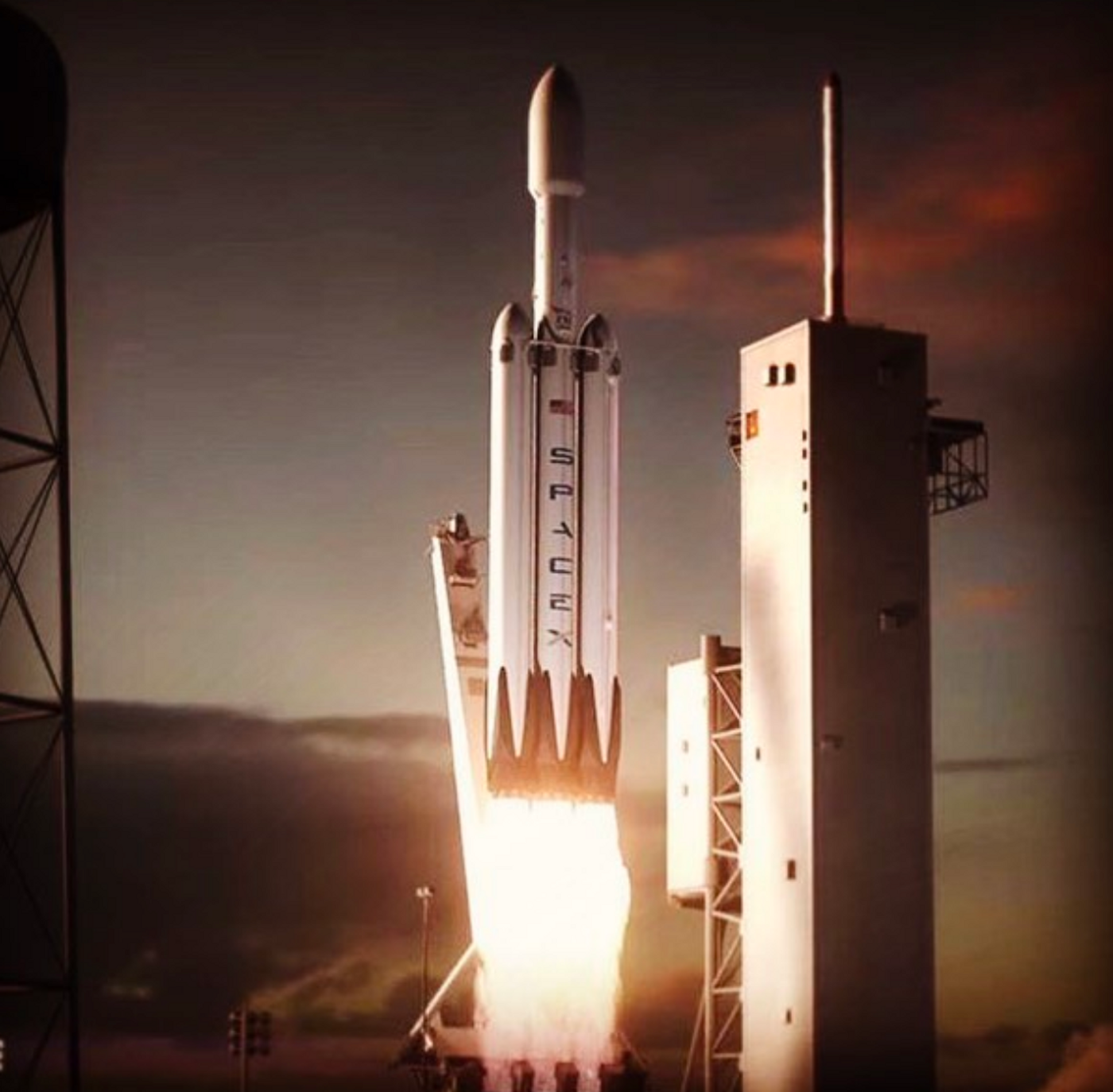SpaceX Prepares Falcon Heavy Rocket for November Maiden Voyage
SpaceX’s upcoming Falcon Heavy rocket is the next step forward towards increasing our footprint in the solar system and making it more feasible to launch larger objects into space.
Image Credit: SpaceX/Elon Musk/Instagram
The Falcon 9 rocket that the company regularly uses today has cargo weight limits ranging from 4-10 tons because of its limited thrust capacity. Falcon Heavy will combat this problem by strapping two additional rocket boosters to each side of the main rocket, making it several times more capable of heavy lifting and for deep space transport.
SpaceX is now planning its first Falcon Heavy test launch for November of this year, and SpaceX CEO Elon Musk is rightfully downplaying the odds of a successful launch via every social media channel he owns.
“Falcon Heavy is twice the thrust of the next largest rocket currently flying and ~2/3 thrust of the Saturn V moon rocket. Lot that can go wrong in the November launch,” Musk said on his Instagram page.
Musk isn’t confident that the Falcon Heavy will clear the landing pad during its maiden voyage. Instead, he hopes it will at least make it into the skies before anything goes wrong to prevent damage to the launch pad. As we all witnessed after SpaceX's Cape Canaveral accident in 2016, damage to a launch pad from a rocket failure can be extensive.
Because there are two additional rocket boosters strapped to the main Falcon Heavy rocket, there are significantly more moving parts to fail than if the company was only launching one of its single-booster Falcon 9 rockets.
With so much uncertainty, the Falcon Heavy will not be used to send anything significant into space when it launches for the first time this November. Instead, a dummy payload will be attached to the rocket until SpaceX is confident that their latest lifting machine is trustworthy enough to ship paying customers’ property into space.
If the Falcon Heavy rocket is successful and puts the dummy payload into space, the two side-strapped boosters will break away from the main one and land on two individual landing pads located in Cape Canaveral, Florida. Shortly after, the main rocket booster will fall back to the Earth and land on a nearby drone ship floating in the Atlantic Ocean.
Related: Can SpaceX land three rocket boosters simultaneously?
SpaceX has a solid track record of landing Falcon 9 rockets, whether they're new or refurbished, so the landing aspect isn’t really what leaves Musk feeling doubtful. Instead, the riskiest part of the initiative is the initial launch, when the rocket boosters are fired up for the first time to fight gravity and lift up off the Earth’s surface.
There are a few more months to wait, but the Falcon Heavy should undoubtedly put on a good show whether the launch is successful or not; this isn't something you'll want to miss.









